Persian decorative art is one of the most significant ethnic productions that has deep roots in the culture and history of this land. Persian art is wide-ranging in terms of diversity. It is part of the traditional arts that combine the transcendental truth of art with crafting techniques and skills. Iran has many ancient crafts that date back to many centuries old, and their roots should be sought alongside the settlements of the original inhabitants of the Persian plateau.
Persian art is divided into two periods of pre-Islamic and Islamic. Iran had many decorative crafts in ancient times before Islam, many of which remained in museums and archaeological excavations. In the Islamic period, Persian decorative arts continuously combined with the principles of Islamic art.
Handmade crafts, express the culture of people and their talents. Persian ethnic handmade products have special characteristics.
Persian Handicrafts are national and indigenous products, capable of development in all regions of the country including the cities, villages, and rural areas. Local artists have easy access to local raw materials and require little work tools. They rely on their skills instead of machines or tools. Persian decorative art became a way to express the feelings and emotions of the artist. These artists are different Iranian folks living in the form of tribes, nomads, rural and locals.
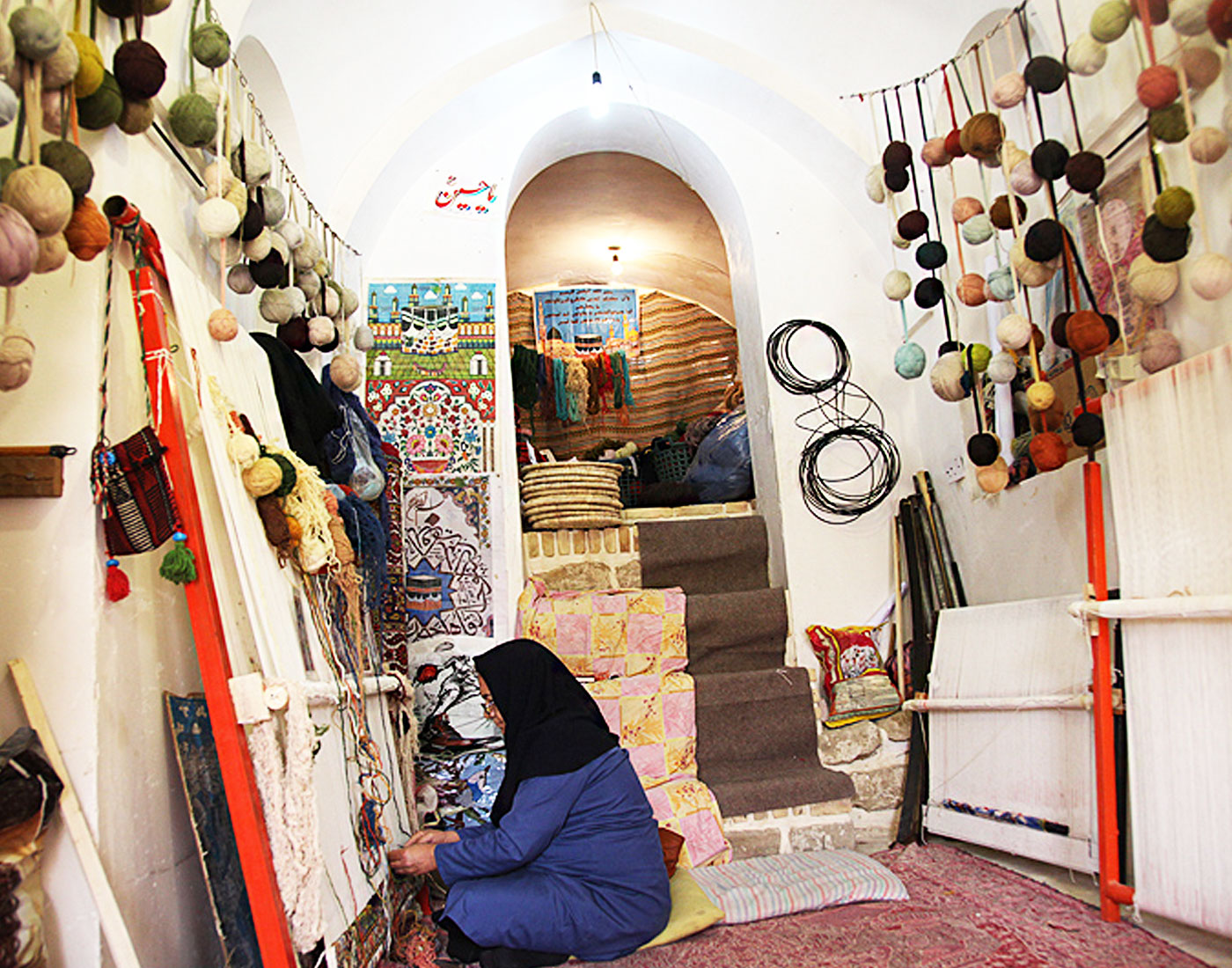 A small rug weaving workshop in the artist's house
A small rug weaving workshop in the artist's house
Most Persian decorative crafts are produced in homes and shops and using natural local materials that usually are not expensive. It is the art of their producer, and his time-taking and intricate work that make the products invaluable.
Persian crafts raw materials are taken from natural sources like animals and plants like wool, vegetable dyes, wood, metals, and clay. Therefore, they do not harm the environment.
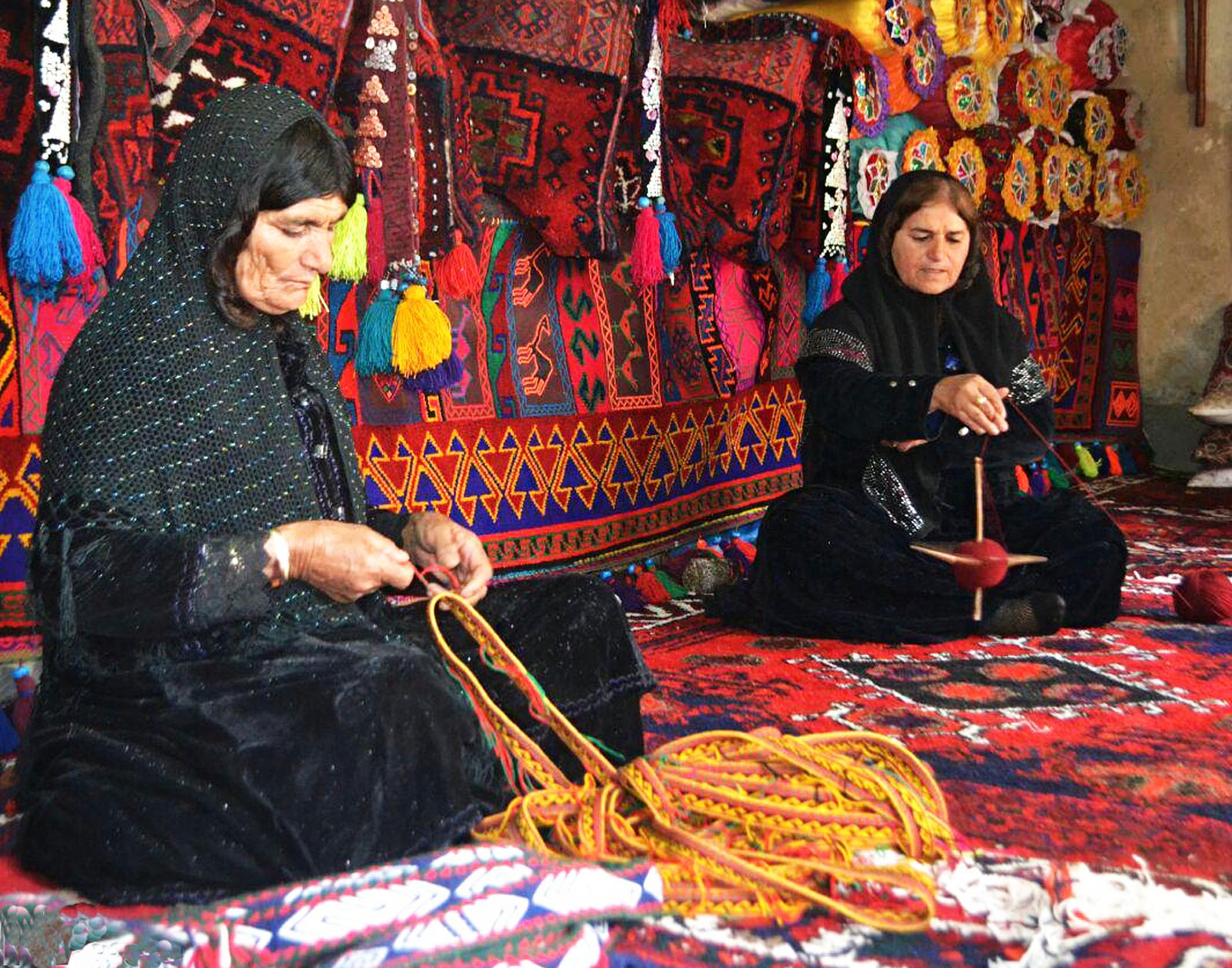 Two nomadic women using natural sources for making handicrafts
Two nomadic women using natural sources for making handicrafts
More than 70 percent of Persian crafts' artists are women. Some Persian tribal and nomadic women make crafts for their own use. Handwoven textiles and decorative rugs are among these products. Tribal and nomadic girls make these products for the time they marry and move to their new home and women make these items for decorating their houses. They do not produce crafts for sale. You can see that they put all their effort to show their feelings and thoughts through their art by choosing colors and motifs of their crafts.
Nowadays some women have opened their workshops. They teach their art and, produce handicrafts in their studios in small cities and villages. They also provide for their family by selling their artworks.
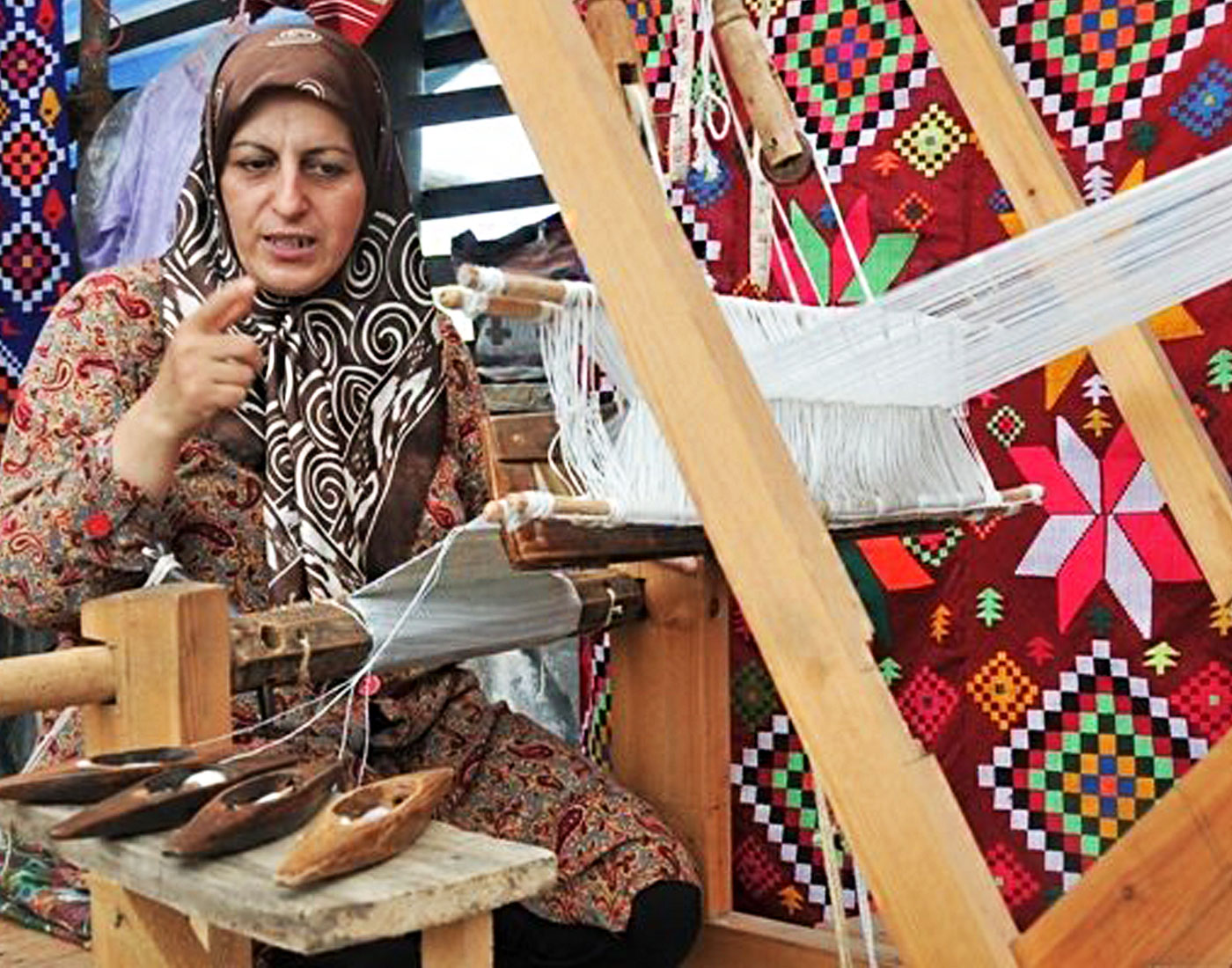 A weaver who sells her products to support her family
A weaver who sells her products to support her family
Persian nomadic and tribal art passes from one generation to another. Mothers teach their daughters how to sew or weave. Most Persian nomadic girls learn to weave when they are very young. In some cases like Meenakari and Khatam-Kari or needlework art, the master teaches the students decorative arts in his workshop or studio or students can take classes to learn their intended art. But in most cases, all these arts are passed from parents to children.
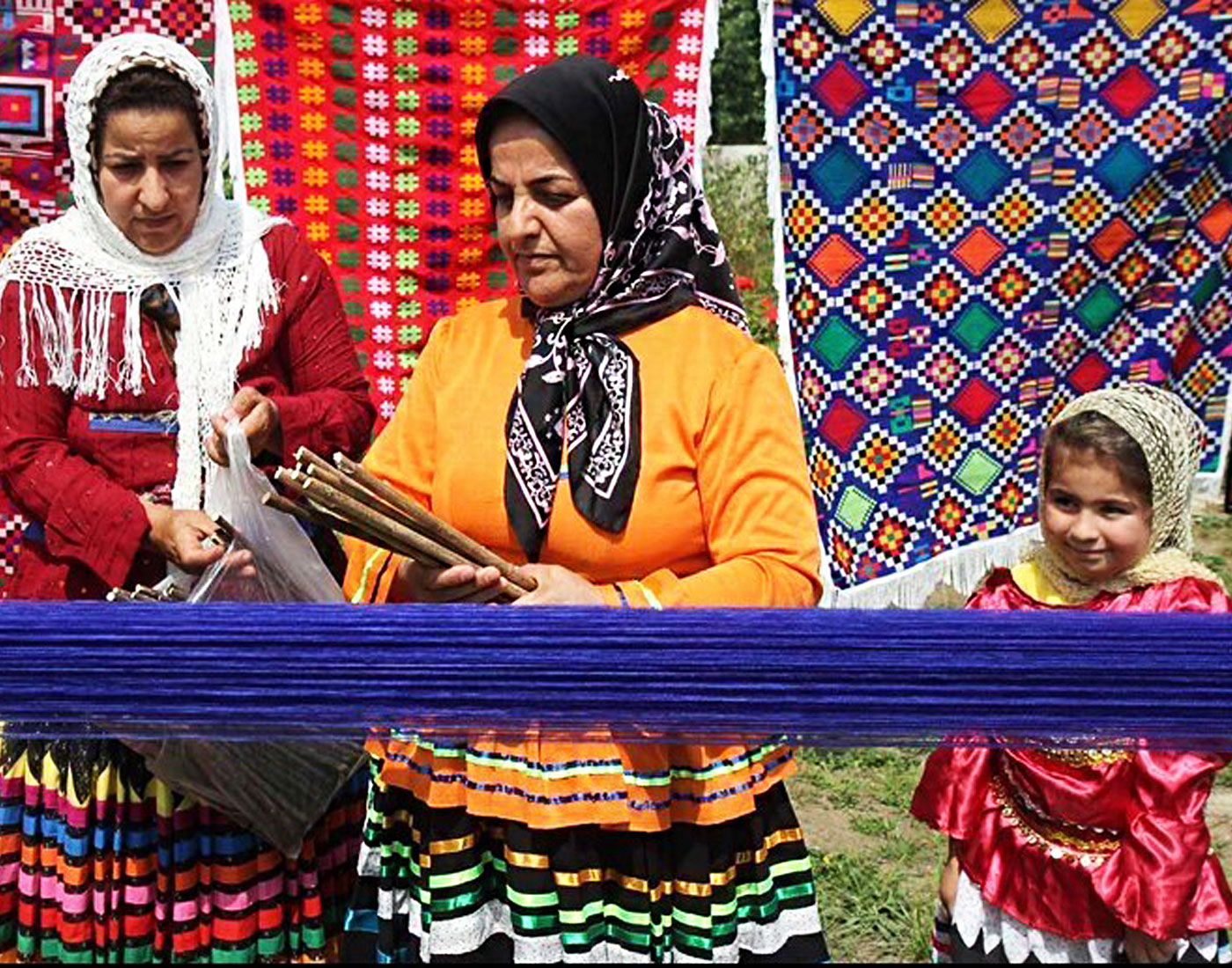 The little girls is learning weaving techniques from her mother
The little girls is learning weaving techniques from her mother
5- Persian crafts are not repetitive and similar to each other
In the case of Persian tribal and nomadic art, it is impossible to find two similar products. As we know, Persian tribal and nomadic artists do not use any plan for their hand weavings. They chose motifs and color based on their feeling and thoughts at the moment of weaving. Although nomadic artists use some symbolic motifs in their hand weaves, they chose the colors, the arrangement of those motifs which makes their products very different from each other.
In the case of some Persian ethnic arts like Meenakari, Khatamkari and some textiles like Termeh, there are defined standard motifs and colors that imply the authenticity of the product. However, the artists chose these motifs and colors. Therefore, these products are hardly similar as well.
1- Emphasis on power in Persian Pre-Islamic art
The maximality of Persian art is rooted in the history and culture of this country. Since Persia was one of the greatest empires, there was an emphasis on showing power in its art and architecture, using symbolic figures and statues, long columns, and the use of red and golden colors. Revised motifs from this period are divided into four categories of plant, animal, human and abstract motifs. These motifs were not only used for decorating but also as symbolic signs.
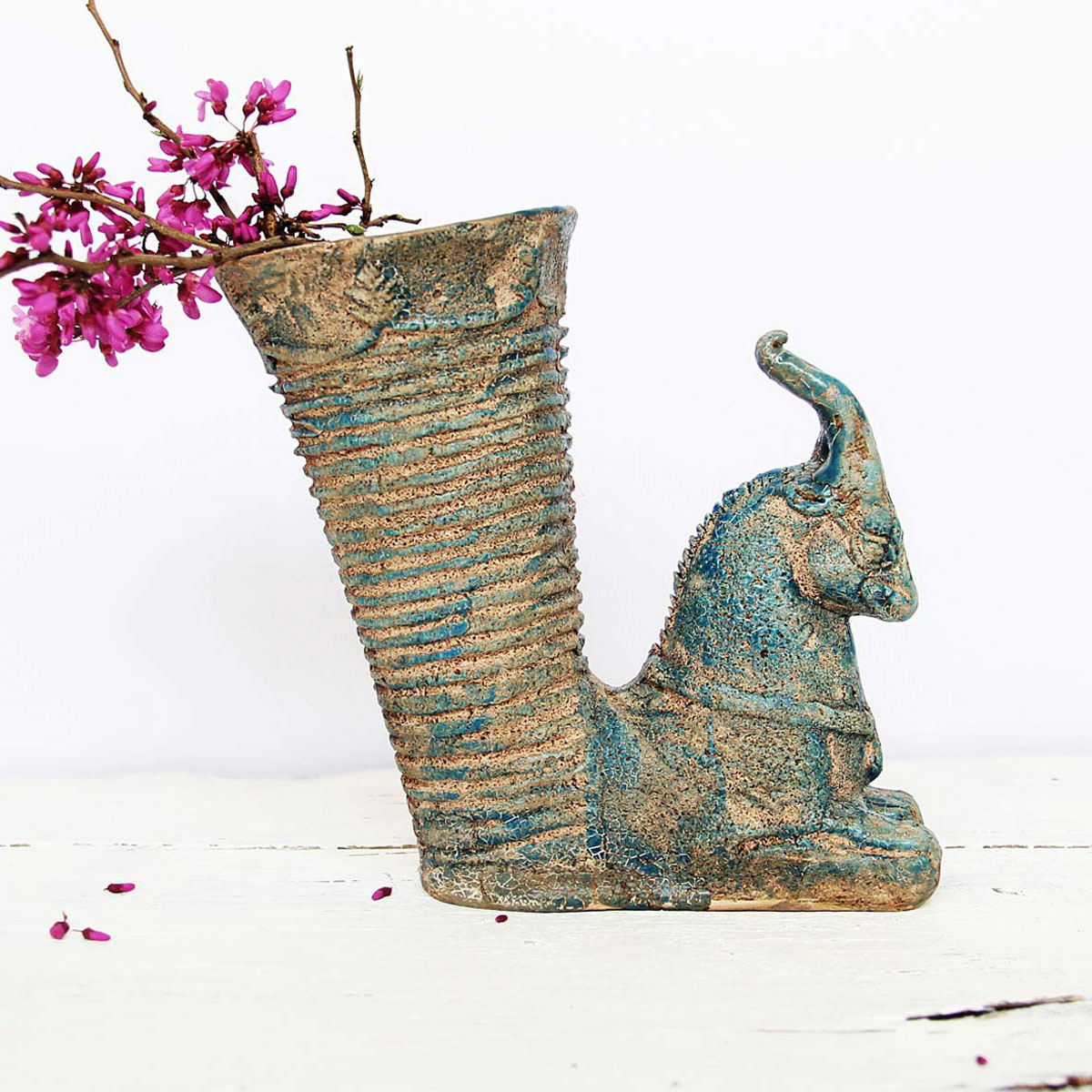 Pottery Vase In The Shape Of An Ancient Persian Rhyton
Pottery Vase In The Shape Of An Ancient Persian Rhyton
Persian art and architecture were influenced by the principles of Islamic aesthetics with the arrival of Islam. The realm of Islamic art encompasses a wide range of North Africa, Central Asia, and India to Eastern Europe and Spain. The art of these areas is almost known to the world and appreciated.
God is the primary inspiration of Islamic art. The beauty that God has created is an inspiration for every work of art in Islamic philosophy.
We can see the peak of Persian Islamic art in the architecture and decoration of the mosques.
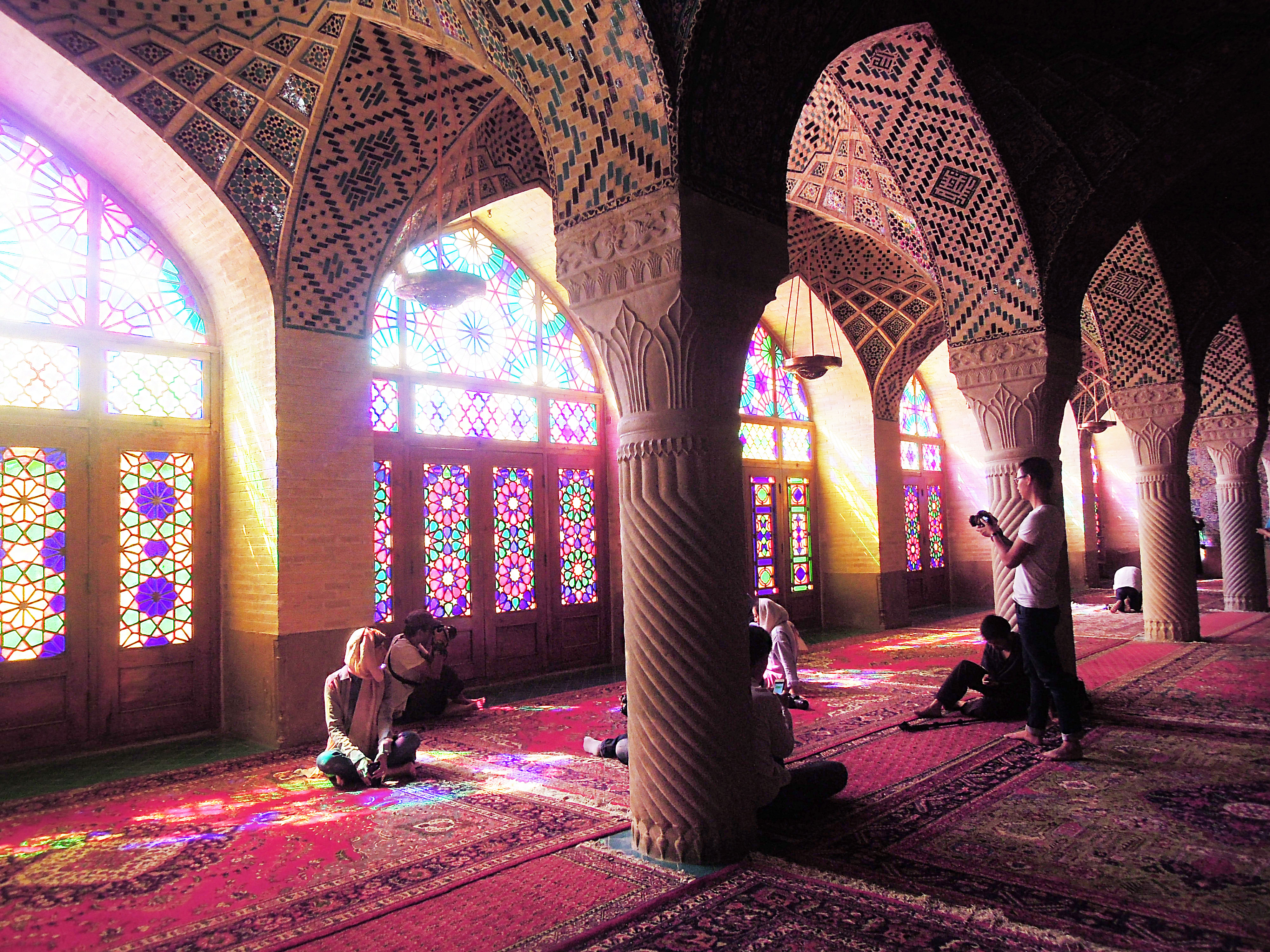 Nasir-ol-molk Mosque, Shiraz, Iran
Nasir-ol-molk Mosque, Shiraz, Iran
3- Ornamentation in Persian Islamic art
In Islamic philosophy, the materials in their rough form are not worth much without ornamentations. By shaping them, the artist makes them worthwhile. It is what God has done to the universe. So the artist is a creator of beauty. Therefore, the more beautiful and decorative are the materials the more worthy they are for a sacred place like a mosque. Ornamentation has influenced Persian decorative arts and handicrafts.
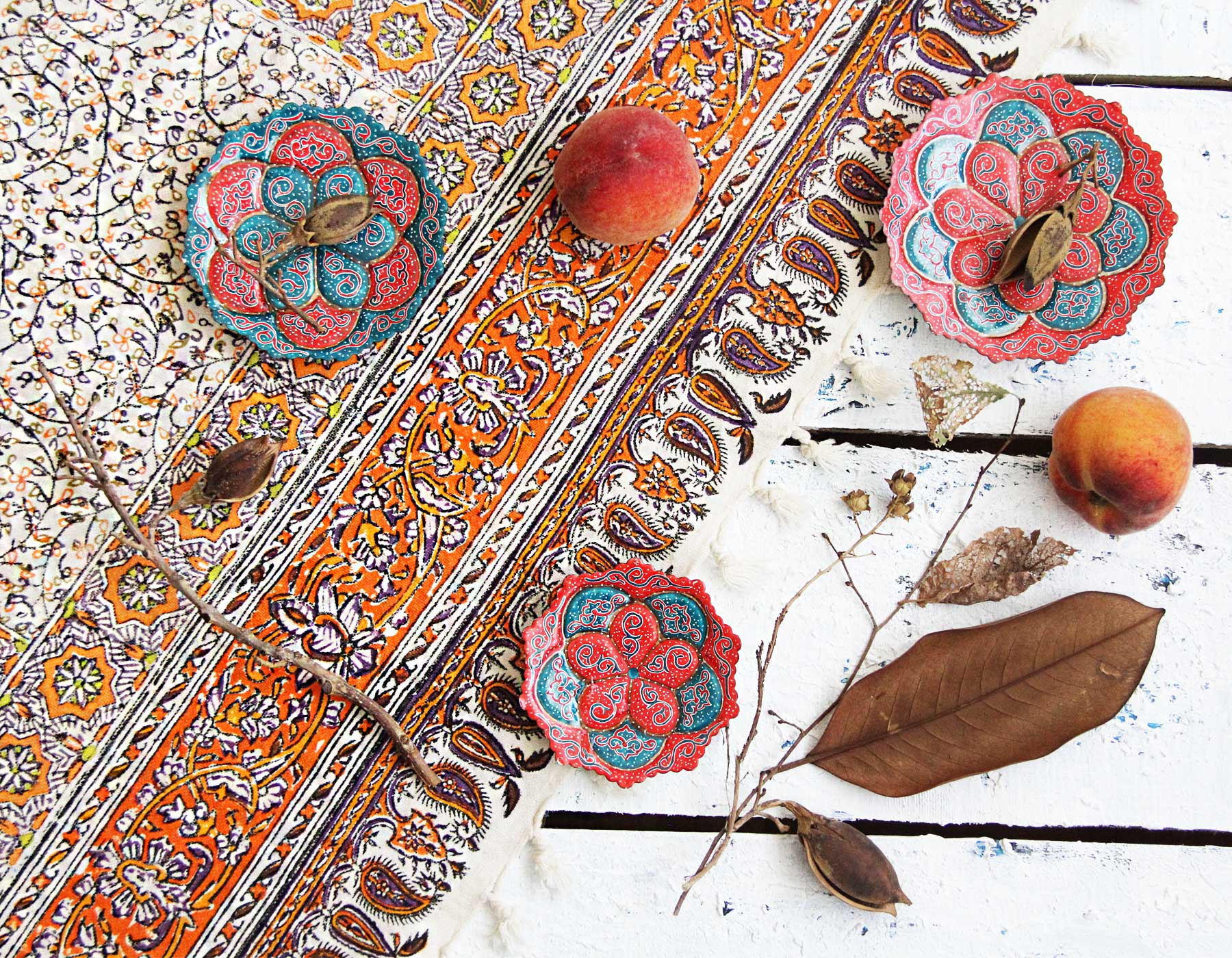 Maximalism and the use of ornamentations in Persian handicrafts
Maximalism and the use of ornamentations in Persian handicrafts
Following the prohibition of animal and human image use in Islamic art, artists turned to plant and flower motifs. These motifs, called Arabesque were the symbol of growth and spiritual sublimity. Islamic artists became exceptional in designing Arabesque over time. Arabesque is common in Persian handmade crafts and decorative arts used in Persian architecture. So Persian crafts are maximalist regarding the use of motifs, Patterns, and embellishments.
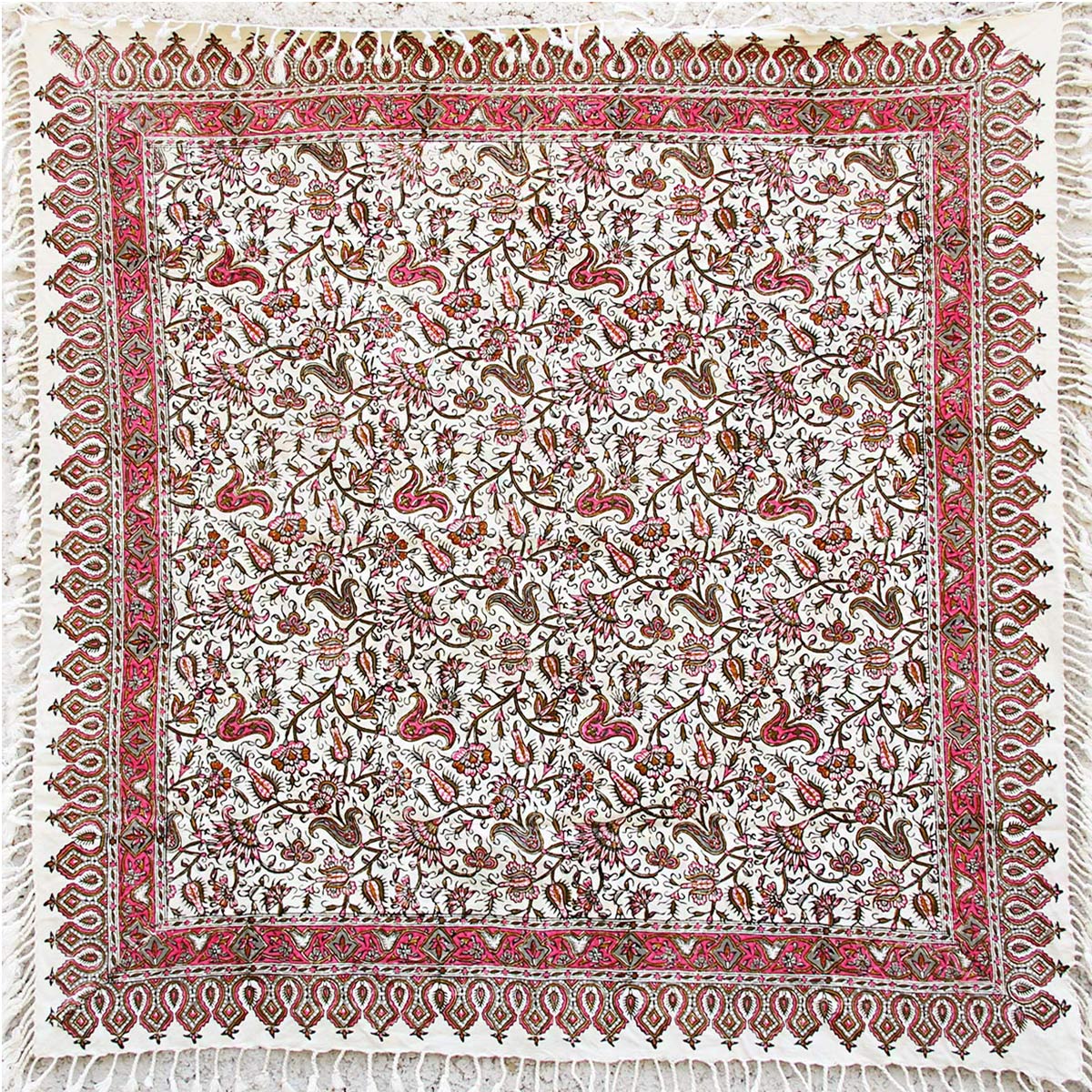 Arabesque motifs in Persian handbock printed textile
Arabesque motifs in Persian handbock printed textile
The most significant elements of Islamic art are geometry and symmetry because they indicate balance. No matter what the artist designs, Arabesque or Calligraphy, He always considers these two factors. Geometry and symmetry are the basic structures of the design. Persian crafts like mandalas, textiles, inland woodworks, and Meenakari are among decorative arts with geometric and symmetric designs.
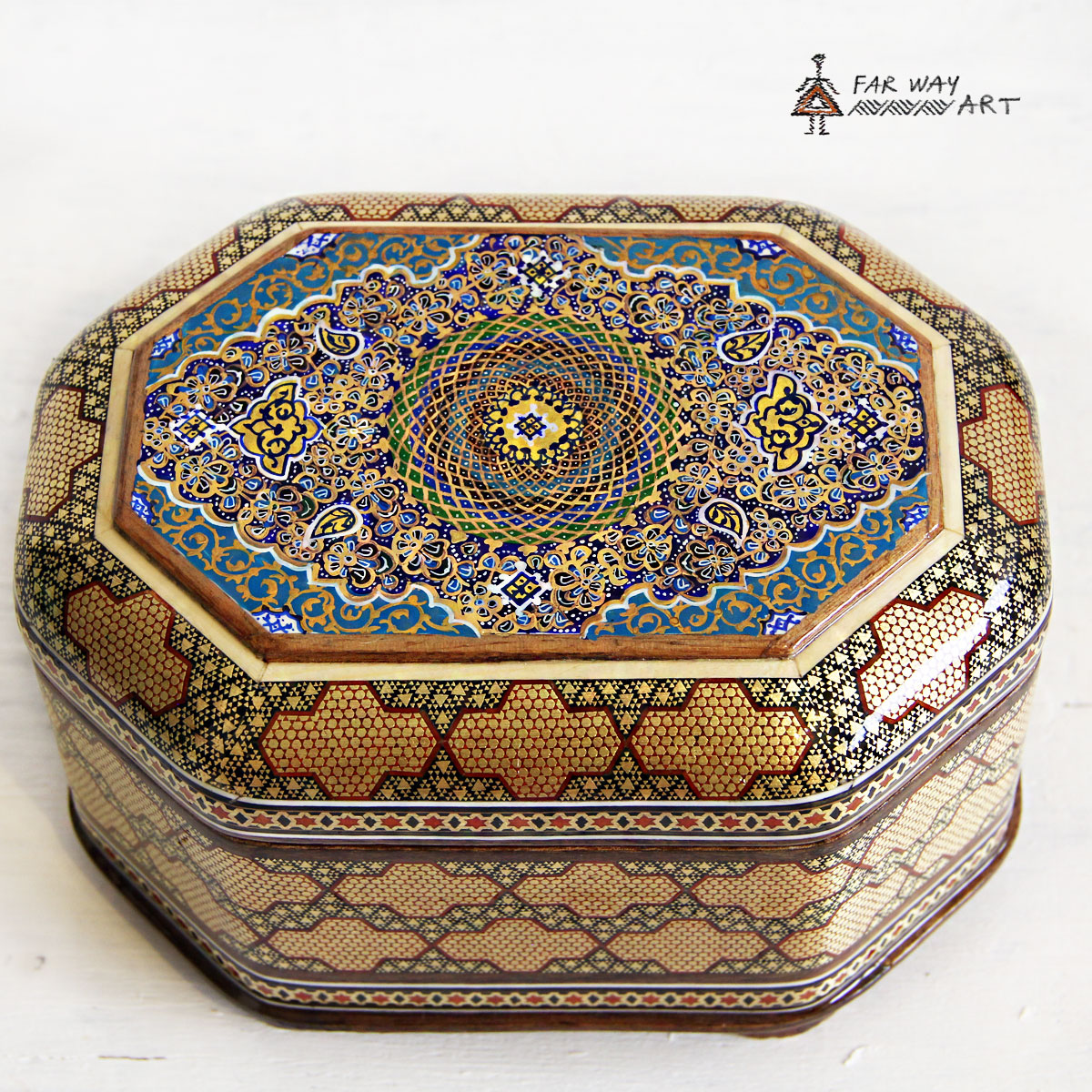 Geometry and Symmetry in a Persian inlaid wood jewelry box
Geometry and Symmetry in a Persian inlaid wood jewelry box
Although nature is a source of inspiration in all Persian decorative arts, Persian tribal and nomadic artists reflect it perfectly in their artifacts. They have lived all their lives in nature and learned how to use natural forces in their favor. Their art reflects their mind which is pure, honest and free influenced by nature which is their only source of inspiration.
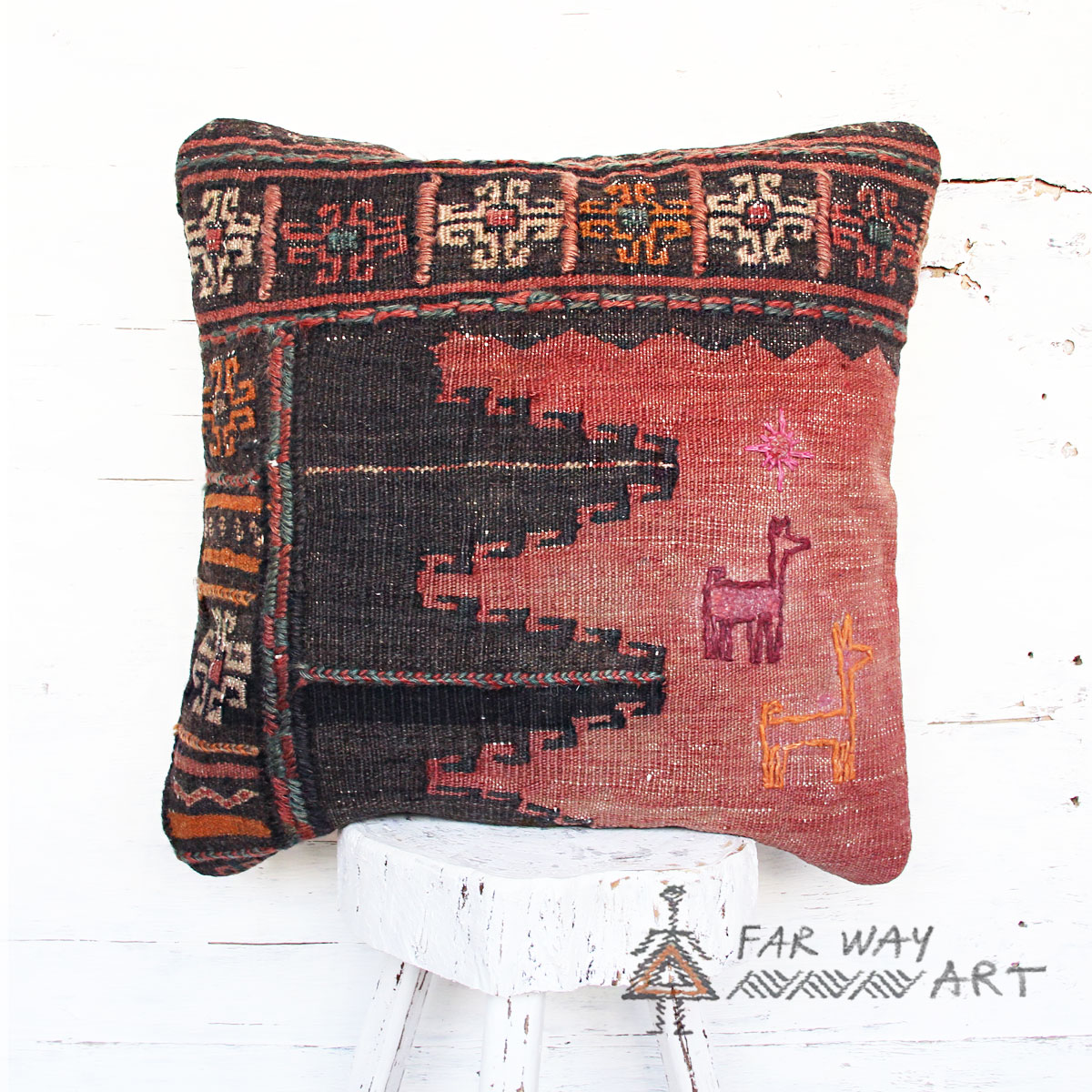 Animals and sun motifs inspired by nature in a Persian tribal rug made into a pillow.
Animals and sun motifs inspired by nature in a Persian tribal rug made into a pillow.
In general, handmade crafts, which are made with love, never look like a factory production. In Persian tribal art, you can see flaws and imperfections occasionally. Contrary to what everyone thinks it implies the authenticity and honesty of the work.
Persian art is broad and is done by different groups in Iran. It can inspire the artists around the world. Unfortunately under the influence of politics, it has become almost impossible. Our goal is to introduce the inspiring sides of Persian art which nobody has paid attention to so far, promote the knowledge, and make the communication between the artists possible.